

Final Project Part A
(I worked hard on the problem during Thanksgiving 2009 and posted it on the server Dec. 4&7, 2009 Friday afternoon)
Chen Tian
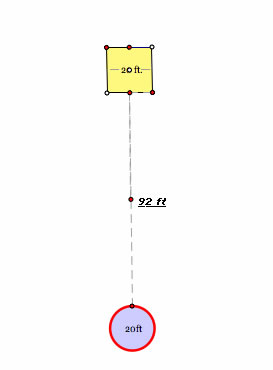 The problem:
The problem:
Farmer Jones had a goat on a tether. He tied the end of the tether not attached to the goat to a stake in a field. Over what area could the goat graze? Of course you need to know something about the length of the tether and about the field.
There are two structures in the field:
-- a shed that is 20 ft long and 20 feet wide (square)
-- a silo that is 20 ft in diameter
The center of the shed and the center of the silo are on a line and the distance apart is 92 feet. The distance from center to center, if you wanted to use this data, is 112 feet.
The tether for the goat is 76.7 feet long. The stake to which the tether is tied is somewhere along the line of centers between the shed and the silo.
Explore the area over which the goat can graze as the stake is moved along this line segment from the midpoint of the
side of the shed to the edge of the silo.
OK. First, let us try to find the position the stake posted so that the goat can graze the biggest area. This is not an easy task, but I like it.
Let the distance from the midpoint of the front side of the shed (square) to the stack be x, and let the distance from the stack to the front point on the edge of the silo (circle) be y, so x+y=92 and x, y are between 0 and 92. Take the stack as the center and the length of the tether as the radius of the circle where farthest the goat might reach.
Let us consider three special cases first.
Case 1:
When x=0, i.e., the stack is just at the midpoint of the side of the shed (square), y=92, the goat will never reach the silo.

The area the goat can reach is the sum of the semicircle (green) of radius 76.7, double quarters of the blue circle of radius 76.7-20/2=66.7, double red sector of radius 46.7, and the up triangle of height 45.62. The total area the goat can reach is 17155.9344 (ft^2).

In this case we consider the changes of the radii of the circles while the goat gets to the vertices of the square, and use the formulas of the area of a circle or a sector in certain angle (proportional relationship), the area of a triangle, “arccos” function, some properties of right angles, Pythagoras theorem, and so forth.
Case 2:
When x=92, i.e., the stack is just at the front point on the edge of the silo (circle), y=92, the goat will never reach the shed.
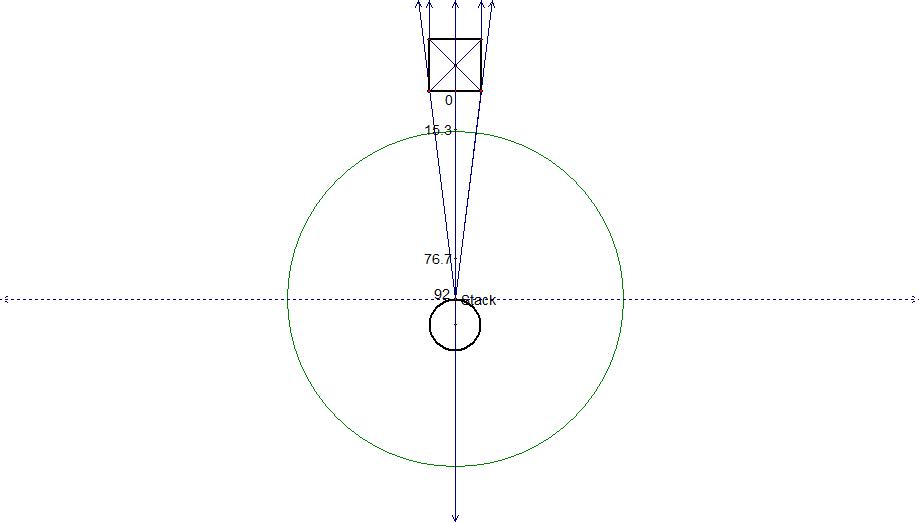
The area the goat can reach is the sum of the semicircle (green) of radius 76.7, and the areas the changing radii scan through while the tether is getting short along the circumference of the silo (circle). Hence, I realized that we need to use the idea of limit in calculus to estimate the sum of the areas the changing radii scan through.
Note the tether is 76.7, which is longer than the circumference (62.83185307) and even the semi-circumference of the circle, so we only consider the area while the tether is getting short along the semicircle (  ).
).
 where
where is the center angle of just one triangle of a polygon inscribed in the circle of radius
is the center angle of just one triangle of a polygon inscribed in the circle of radius ![]() , which is the changing radius corresponding to the
, which is the changing radius corresponding to the  , and
, and ![]() denotes the length of the tether from the tangent point on the circle to the goat.
denotes the length of the tether from the tangent point on the circle to the goat.
The following figure and explanation in italic is cited from http://www.karlscalculus.org/calc12_2.html
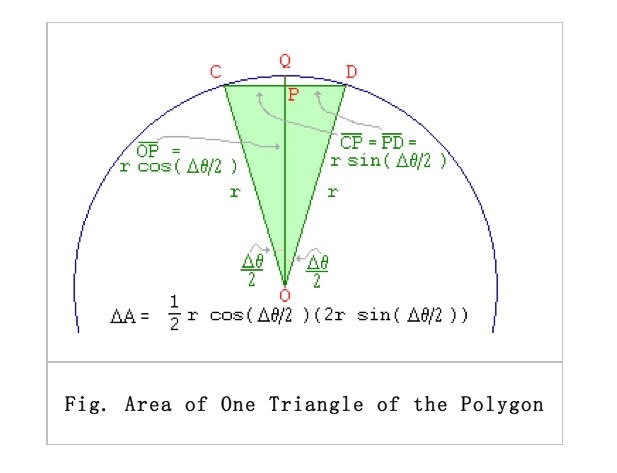
The triangle is bisected to make it easier to do the trigonometry that we need to find the base and the height. Simplifying the expression in the figure above, we get the shaded area of the triangle is
 .
.
But we are interested in the limit as the number of triangles goes to infinity. That means we are interested in the limit as Δθ goes to zero. And if Δθ goes to zero, then so does Δθ/2. Recall that the limit as x goes to zero of cos(x) is 1. Recall also that -pic_Chen.jpg) . That means in the area equation as we go to the limit, we can replace cos(Δθ/2) with 1, and we can replace sin(Δθ/2) with Δθ/2.
. That means in the area equation as we go to the limit, we can replace cos(Δθ/2) with 1, and we can replace sin(Δθ/2) with Δθ/2.
Thus, when Δθ goes to 0 we have  , and so
, and so  .
.
And to indicate that we are taking it to the limit, we replace Δθ/2. with dθ/2 and ΔA with dA. We also put the integral sign in front of both sides of the equation above to indicate we are adding up all the pieces.
In our situation there are ![]() radians around the silo (circle) so we get
radians around the silo (circle) so we get
 , which equals
, which equals  .
.
In this specific case ![]() ,
, ![]() , so the total area the goat can reach is 15683.12053 (ft^2).
, so the total area the goat can reach is 15683.12053 (ft^2).

In this case we consider the changes of the radii of the circles while the goat goes along the silo (circle), and use the formulas of the area of a circle or a sector in certain angle (proportional relationship), trigonometry, the area of a triangle, polygon inscribed in a circle, the idea of limit and integral in calculus, and so forth.
Case 3:
When 35.3
 .
.
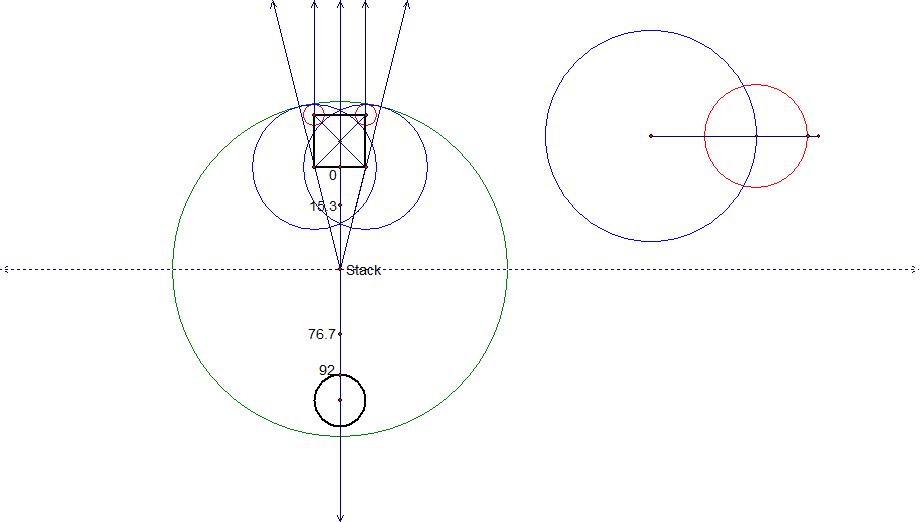
The area of that geometric figure is the area of the big green circle subtracting the area of the square (shed) and the area of the small circle (silo), which equals 17767.48474 (ft^2). But the virtual area the goat can reach is smaller than this value when the goat can reach both buildings. We will see soon later some other possible area the goat can reach which is bigger than this value (of course, also bigger than the two area values in the first two cases). Hence, I am going to only consider the cases when the goat can reach only one of the buildings. (The goat has to reach one of the buildings, since the diameter of the big green circle is 2*76.7=153.4, which is greater than 92, the distance apart between the shed and the silo.)
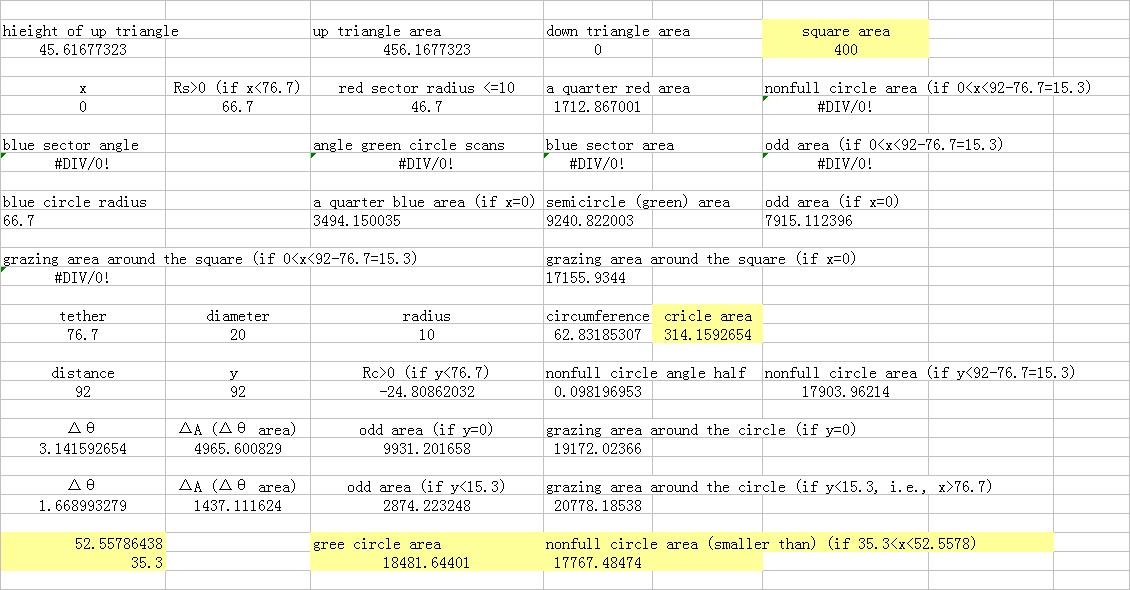
Based on what we analyzed above, we only need to check the areas when 0
Plugging in different x values, we noticed the following:
Case 4:
When x goes from 0 to 15.3, the area value keeps increasing, and the graph of the area function looks quadratic and concave, (15.3, 17811.56728) is its limit point.
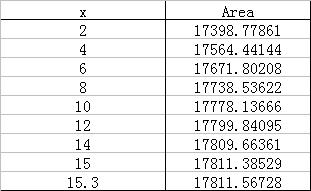

Case 5:
(5.1) When x is between 76.7 and 92, the graph of the area function still looks concave and quadratic, and I conjecture that the x value corresponding to the peek area value is around 82.8;

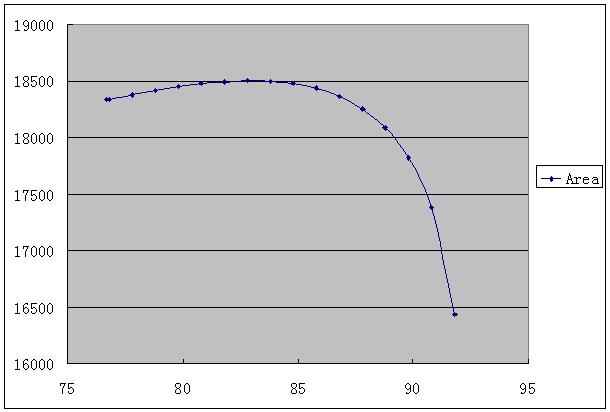
(5.2) so we observe the area values when x is between 82 and 83.8 and notice the concave area function has a peek or inflection point (83, 18502.1).
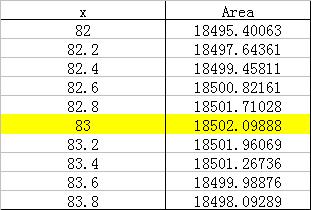
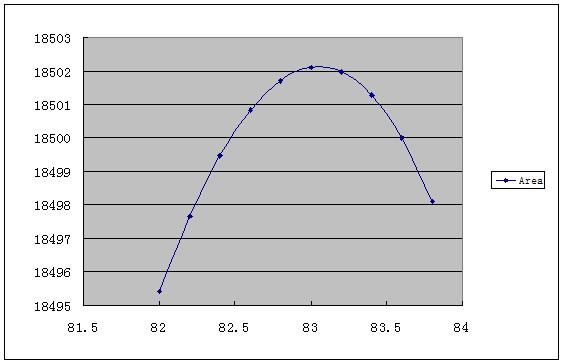
Therefore, I think we arrive at the greatest area (18502.1 square feet) which the goat can graze when the stake is fixed 83 feet away from the midpoint of the front side of the shed (square) .
The following table and figure are for the case 4 and case 5 together:
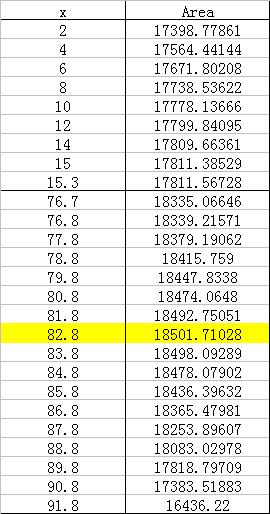
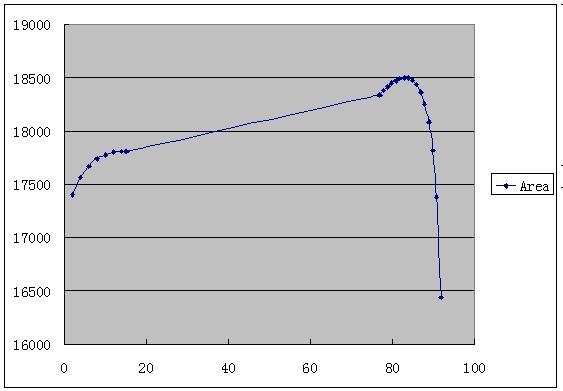
Now we make this task easier.
As we see the grazing area beyond the line j around the shed is the biggest when x=0, and the grazing area beyond the line k around the silo is the biggest when x=92. This can be seen geometrically when we manipulate the GSP document.
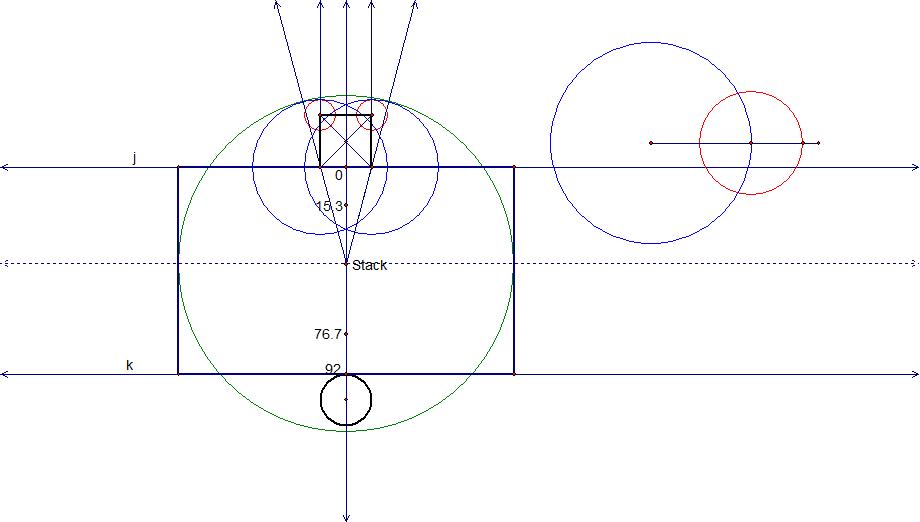
The following is only one example of the comparison the areas (smaller than when x=0 or x=92) when x is not 0 or 92.
![]()
Actually, the grazing areas beyond the lines j, k are decided by the lengths of the tether from the touching point at the building to the goat, and also by the rotation angles, which are always shorter and smaller than those when x=0 or x=92.
So we conclude that the biggest total area over which the goat can graze as the stake is moved along this line segment from the midpoint of the front side of the shed to the front edge of the silo is the sum of the area of the 92 by 2*76.7 rectangle, the odd area beyond the line j around the shed when x=0, and the odd area of beyond the line k around the silo when x=92. The total grazing area is 28470.21092 square feet when the stake is moved along

In fact, we don’t really need to calculate the actual areas when x is not 0 or 92, as we did before for figuring out the maximum area the goat can reach when the position of the stake must be fixed. That is why only trying to figure out the maximum grazing area when the stake is moved along is easier than trying to figure out the maximum grazing area when the stake is fixed somewhere. But we still need to estimate the grazing area around the silo (circle), so the thinking and calculation are still not trivial though easier and less.
Here is the spreadsheet I created to calculate out these results above (including the specific functions). You may want to check it out.